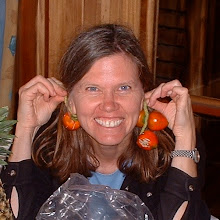Wisconsinites often feel our state is underrated. It seems that in movies, characters that are supposed to be from an obscure backwater are often from Wisconsin. Perhaps I'm being overly sensitive. However quietly, some really important things happen in my home state. Consider the small town of Baraboo, population 11,000. In the nearby countryside is the most important crane conservation organization in the world.
Why Baraboo? The parents of one of the founders had a farm here and helped them get started in the 1970s.
If you visit the International Crane Foundation (ICF), you can see all 15 species of cranes—but this is much more than a zoo. ICF works in over 40 countries to conserve cranes and the wetland and grassland ecosystems that are so important to both cranes and people. Cranes are found on all continents except Antarctica and South America. ICF has done important research on captive breeding and reintroducing birds to the wild. If you visit, you can learn about these efforts as well as be incredibly close to cranes.
In a time when most wildlife news seems to be bad, it's encouraging to learn about successes with cranes. For example, in the 30's there were only about 25 pairs of Sandhill Cranes in Wisconsin. Now thanks to wetland restoration, Sandhills are commonly seen and the state population is over 12,000. We often seen them on a bike ride that goes only 10 km (6 miles) from our urban home.
The rarest crane in the world is North America's Whooping Crane. In the 1941, the wild population of Whooping Cranes dipped to just 16 birds. Although still endangered, the population has gradually increased and ICF is helping establish a second migrating flock.
At ICF, you can see a pair of Whooping Cranes in an enclosure that makes you feel like you are in the middle of a vast wetland with them. (The fence is behind a berm.)
Several years ago we visited when they were raising a chick. This year, the pair on display has not yet laid an egg but they have built a nest. It's amazing to be so close to such majestic birds; at about 5 and 1/2 feet they are North America's tallest bird. If you are unable to visit Baraboo, you can go to their site to learn more about cranes, support ICF with a donation or purchase from their shop. I bought these handcrafted Nepalese buttons.
Subscribe to:
Post Comments (Atom)











2 comments:
Cool buttons! I have heard recently that at least one whooping crane egg was laid and hatched successfully this season in the wild ( at Necedah Wildlife Refuge). Ancestry is the ICF cranes, I believe.
They also have earrings like that but smaller. That's cool to know that birds in the new flock laid an egg in the wild.
Post a Comment